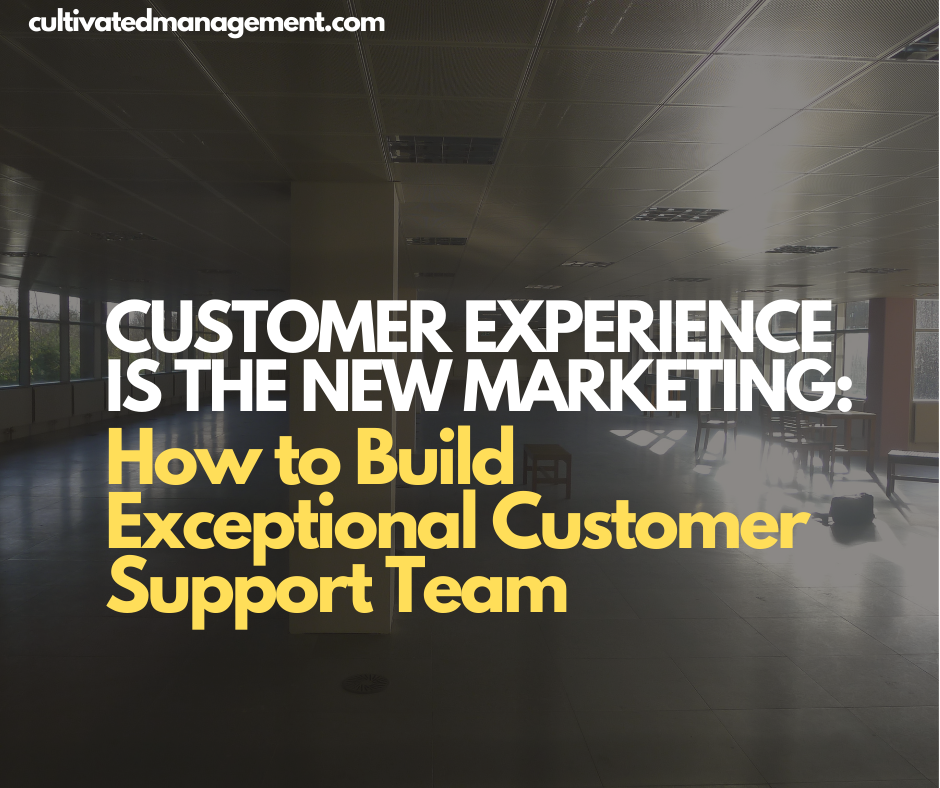
In today’s highly connected, competitive world, customer experience (CX) is no longer something you feel you should do — it’s actually a powerful differentiator. Providing great customer service can set your business apart from competitors, retain loyal customers, and even turn them into raving fans, or something like that. 😄
Your customer support team, or customer service team, is often the first and most visible point of contact for your customers—they are your frontline brand ambassadors.
Stand out in a sea of poor experiences, and you’ll not only delight your customers but also reduce churn, lower acquisition costs, and protect your brand.
Why Build a Great Customer Support Team?
No matter how high-quality your product or service is, customers will have questions, encounter issues, or request returns etc. A strong customer support team is essential to address these interactions efficiently and empathetically.
Customer experience extends across product usage, pricing, service, and more. In this guide, we’ll focus on the teams that directly support and serve your customers — the backbone of CX.
High-Level Principles for Exceptional Customer Support
- Build relationships with your customers
- Optimise tools and processes for your customer’s benefit
- Solve problems once and prevent recurrence
- Avoid using metrics for individual performance reviews
- Measure everything that improves processes, not individuals
- Provide the best working environment
- Encourage continuous process improvement
- Foster strong relationships with other teams
- Staple yourself to customer issues
- Communicate effectively—internal and external
- Follow up on all issues promptly
- Align your team around clear goals
- Eliminate negativity about customers
- Make it easy for customers to reach you
Let’s dive deeper into some of these principles.
Build Relationships with Your Customers
Building relationships with customers pays tenfold. While some may say there’s no time, it doesn’t take long to message a customer, field a call, or review their account data. Even small gestures signal that you’re present and invested in their success.
Never forget your customers, and don't let them forget you either.
Leverage social media, email, and chat tools to understand your customers’ businesses, challenges, and the value your product provides. Introduce your team members, explain their expertise, and humanise the support experience. When customers know who they’re speaking to, trust and loyalty grow naturally.
Optimise Tools and Processes for Customers
Your tools and workflows should serve the customer first — not internal convenience. Many teams optimise processes for themselves, often at the cost of CX.
Consider your inbound contact system, CRM, issue management, and internal communications: are they designed to make the customer’s experience seamless? Or easier to report to management?
Solve Problems Once
Rather than addressing the same issue repeatedly, fix the root cause.
- Product issues: Can you improve the product to prevent the problem?
- Process issues: Can training, onboarding, or workflows be improved to eliminate recurring errors?
This reduces friction, improves efficiency, and demonstrates to customers that you care about long-term solutions, not just quick fixes.
Metrics: Measure to Improve, Not to Punish
Avoid using customer experience metrics and KPIs for individual performance reviews — they often drive the wrong behaviour, especially if you have targets set against them.
Customers care about whether their problem is solved and how quickly. Metrics should identify process improvements and ways to make the business better for customers, not reward behaviours that hinder CX. Misplaced targets often lead to:
- Issues bounced between departments
- Partial resolutions requiring repeat calls
- Focus on numbers rather than customer satisfaction
Provide the Best Environment
Equip your team with what they need to succeed:
- Reliable hardware and software
- Technology, data and customer insights
- Training for technical and soft skills
- Quiet spaces for sensitive calls
Encourage open discussion of problems, and remove fear from the workplace. Great customer experience starts with a great employee experience.
Encourage Process Improvement
Your team knows what works and what doesn’t. Provide tools, training, and autonomy to improve processes continuously.
Even small improvements accumulate into significant CX gains over time.
Build Relationships Across Teams
Customer issues often cross departments — sales, marketing, product, and operations. Building strong relationships with these teams reduces hand-off friction and ensures a seamless customer journey.
Staple Yourself to Customer Issues
Follow issues as they move through your system - I call this stapling.
Put yourself in the customer’s shoes and see where friction exists. Optimise workflows based on these insights to improve both the customer and employee experience.
Quadruple Your Communication
Internal and external communication is critical:
- Internal: Share daily challenges, successes, and insights. Help other teams understand your work.
- External: Update customers on progress, product changes, or issues. Transparency builds trust.
Transform how you communicate—live workshops for teams, self-paced online for individuals.
Timely Follow-Up
Never leave issues hanging. Even if a problem isn’t resolved immediately, maintain updates and ownership.
Customers appreciate transparency, and consistent follow-up shows reliability.
Team Alignment and Culture
- Ensure everyone understands roles, responsibilities, and goals.
- Foster a safe environment for discussion and improvement.
- Stop negativity about customers—treat them as the lifeblood of your business.
“The customer is the most important visitor on our premises. He is not dependent on us. We are dependent on him.” – Mahatma Gandhi
Make It Easy for Customers to Contact You
Remove barriers: make contact methods visible, forms simple, and self-help resources helpful but not obstructive. Customers should feel heard and supported without unnecessary friction.
Conclusion
Products break, services have quirks, and customers will always need help.
Customer support is a core component of customer experience, not just a cost centre. By building relationships, optimising processes, and empowering your team, you can deliver service that delights, retains, and converts customers into advocates.
Always optimise for the customer first. Metrics, processes, and internal politics are in service of helping people make the service and product better. When done right, customer support becomes your most powerful marketing tool.
